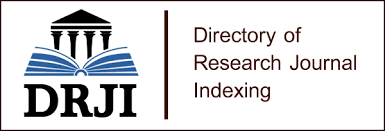FOREST WAQF STRATEGY IN PROTECTING INDIGENOUS FORESTS IN ACEH PROVINCE
DOI:
https://doi.org/10.55327/jaash.v7i4.249Abstract
Aceh's forest is a biosphere reserve, a world heritage, and a natural habitat for animals, such as the Sumatran tiger, Ceumpala Kuneng, and Sumatran elephant. However, Aceh's forests are currently experiencing a deficit related to uncontrolled land conversion, among others due to forest conversion to oil palm land, gold mining, illegal logging, and illegal new stone mining. Although Aceh's forest area as of 2019 was 2,989,212 hectares, the damage figure reached 15,140 hectares. Thus, this study aims to create a model of Aceh’s forest waqf to protect it from the natural damage caused by humans. This qualitative research utilized the ANP (Analytic Network Process) analysis tool. The study results revealed that the most important factors for Aceh's forest waqf model were components of forest waqf, companies, and the government. Forest waqf solutions include infaq and shadaqah fund solutions, waqf institutions, and full-time nazhir (waqf manager). The company's solutions encompass institutional audits, citizen patrols, and reporting. Meanwhile, the government's solution can be in the form of a limitation solution, policy evaluation, and local government involvement. Besides, the strategy of forest waqf in protecting indigenous forests in Aceh Province can be in the form of synergies between forest waqf and BAZNAS (National Zakat Amil Agency), monitoring local officials, and granting authority to local governments.
Downloads
Published
How to Cite
Issue
Section
License
Copyright (c) 2022 Lukman Hamdani, Bayu Taufiq Pasummah

This work is licensed under a Creative Commons Attribution 4.0 International License.
Copyrights for articles published in Journal of Asian and African Social Science and Humanities are retained by the authors, with first publication rights granted to the journal. The journal/publisher is not responsible for subsequent uses of the work. It is the author's responsibility to bring an infringement action if so desired by the author.
Articles published in Journal of Asian and African Social Science and Humanities are published under the Creative Commons Attribution (CC-BY) license, which permits others to distribute, remix, tweak, and build upon your work as long as they credit you for the original creation.
Â















